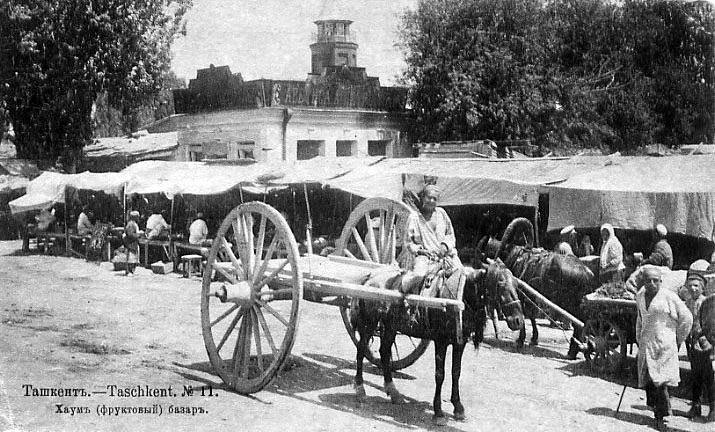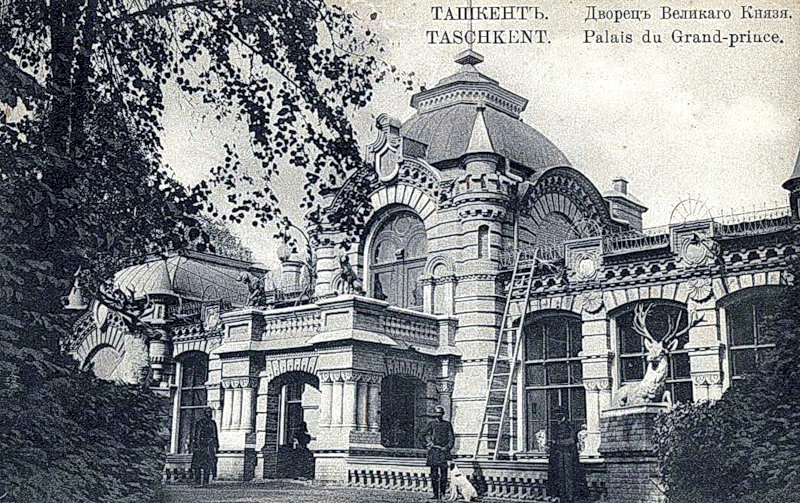
What was Tashkent at the end of XIX century? We can know about it only from the books of travelers, had visited Tashkent at that time.
Gabriel Bonvalot, famous French traveler, had been in the city in autumn 1880. He called Tashkent as the city of Stone, mentioned that its size was the same as Paris’s. The city was divided into 4 district – dacha. Each district was also divided into many blocks, called mahallya.
The name of mahallya showed the profession of local people. So, casters were living in mahallya Dargez, smiths – in Takachi and so on. There were one-storied adobe houses with flat roof in the old city. They had one feature: theirs doors and windows faced only courtyard.
Bonvalot noticed that local people wore traditional clothing: cotton shirt, wide and short pants and long-sleeved gown. For shoes they used soft-leather boots. Rich people dressed in the other way: they had big turban made from wool or muslin. Female clothing at that time was common: they wore slip-up and long trousers decorated with lace. They also liked to put on narrow-sleeved jacket.
The main place for communication was bazaar – local people shopped here, told city news, listened to singers, watched presentation of magician and acrobats. One of the most favorite entertainments for local people was fighting of quails and partridges. Such kind of entertainment was held on Sheikhantaur complex. During great holidays people were going on a horse game – ulak.
Tashkent city divided into 2 parts (old and European) by river Anhor. Today we can’t see great difference between these two parts, but at that time everything was different. Sven Anders Hedin, Swiss traveler, visited Tashkent in winter 1894. He described the new part of the city in detail:

"Local intellectuals, Russian officials, officers lived only in new part of the city. There were also one-storied houses, but they were different. There were great buildings of big shops and banks. And the main sightseeing of the city was the palace of Duke Romanov."